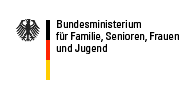Application
Application of tools within the framework of the implementation of GM – problems of acceptance: their causes and ways to solve them
Tools can provide support and assistance in the implementation of the strategy Gender Mainstreaming (GM) in day-to-day specialist work. They serve as a kind of ‘translation aid’ for linking thinking and acting that is oriented to gender equality with individual work stages. An essential function of tools is to make it easier for staff to identify gender aspects in their specialist work with the aid of targeted test questions. More complete information becomes available through the early and systematic taking into account of gender aspects. On this basis, more effective and just decisions can be made and the quality of the work can be optimized. Despite these advantages, tools are sometimes not being applied in day-to-day work. The causes that can result in this will be the topic of the following. The causes of the non-application of tools are multi-layered:
Intrinsic motivation is not compulsory, because the factors of will, knowledge and ability do not build on each other in a linear fashion. It is conceivable to be able to do something and possess the required knowledge, but not to want to do it, for example if you work in an organizational culture in which results that are oriented to gender equality are not rewarded. Equally, the will and knowledge for “gendering” may exist, but you have not yet developed sufficient knowledge to put that into practice. The implementation of GM involves complex dynamic processes which not least need time.
In the following, possible problems of acceptance of the application of tools in day-to-day working life are sketched out and ways to solve them, or compensatory measures, are identified, which can be meaningfully used to counter such problems in the areas of will, knowledge and ability.
- deficient quality of the tool can play a role.
- In the same way, the environment in the organization as a whole, i.e. a lack of instructions or contradictory instructions from management, a lack of acceptance in the internal organizational, political or social environment, etc., can also be crucial.
- Motivational causes often play a role in non-application. That is, causes within the staff themselves.
Intrinsic motivation is not compulsory, because the factors of will, knowledge and ability do not build on each other in a linear fashion. It is conceivable to be able to do something and possess the required knowledge, but not to want to do it, for example if you work in an organizational culture in which results that are oriented to gender equality are not rewarded. Equally, the will and knowledge for “gendering” may exist, but you have not yet developed sufficient knowledge to put that into practice. The implementation of GM involves complex dynamic processes which not least need time.
In the following, possible problems of acceptance of the application of tools in day-to-day working life are sketched out and ways to solve them, or compensatory measures, are identified, which can be meaningfully used to counter such problems in the areas of will, knowledge and ability.
Will
Lack of acceptance of gender equality: If tools are not applied because gender equality as an aim of somebody’s own specialist work is called into question as a matter of principle, this can be countered accordingly by making the tools binding. Possible methods are:
- to make tools binding by establishing them within a legal or organizational framework (e.g. in the rules of procedure)
- to issue binding instructions for application (Top Down). A possibility here is to compensate for a lack of willingness with orders and control. A more modern possibility is to prescribe the binding nature of the tools by means of credible communication. Using specialist exchange of views in official interviews, staff may, for example, be convinced at a technical level of gender aspects and best practice.
- communication of information on GM and descriptions of good examples (best practice)
- initiation of internal communication processes on these topics.
- communicating the enhancement in the quality of specialist work brought about by orientation to gender equality
- setting (material) incentives
- controlling
- installing feedback processes
- establishing orientation to gender equality in the organization’s leading principle
- providing necessary resources (time, money, staff)
- agreeing priorities for proceeding in stages
- making clear the advantages to be gained from applying the tools
- review hierarchical sanctions
- transparently communicate sanctions in the event of non-compliance
Knowledge
Stereotyped everyday knowledge as the yardstick: If staff do not understand “gender” in all its complexity, but use personal notions such as stereotypes of “men” and “women” as the yardstick for their specialist work, the following measures may be meaningfully applied in the short term:
- providing information on the meaning of gender (e.g. in the intranet or in internal publications)
- sensitizing staff to gender issues in their subject area (e.g. by means of examples of lectures)
- to establish gender competence as a criterion for good staff development
- offering gender-related training on subject areas
- promoting teamwork
- using forms of participation (e.g. interview with gender experts and actors in equal treatment policy)
Ability
Feeling that the demand is too great: The application of Gender Mainstreaming in the context of their own work is something most staff are not used to. If staff feel that the demands associated with this new task are too great, you will need practical assistance. Possible measures include:
- facilitating “training on the job” to give staff concrete experience with the federal government’s GM tools in their own projects. (e.g. the “GM konkret” workshops offered by the GenderCompetenceCenter)
- offering training in policy fields
- communicating tools
erstellt von Administrator
—
zuletzt verändert:
02.01.2010 20:07





